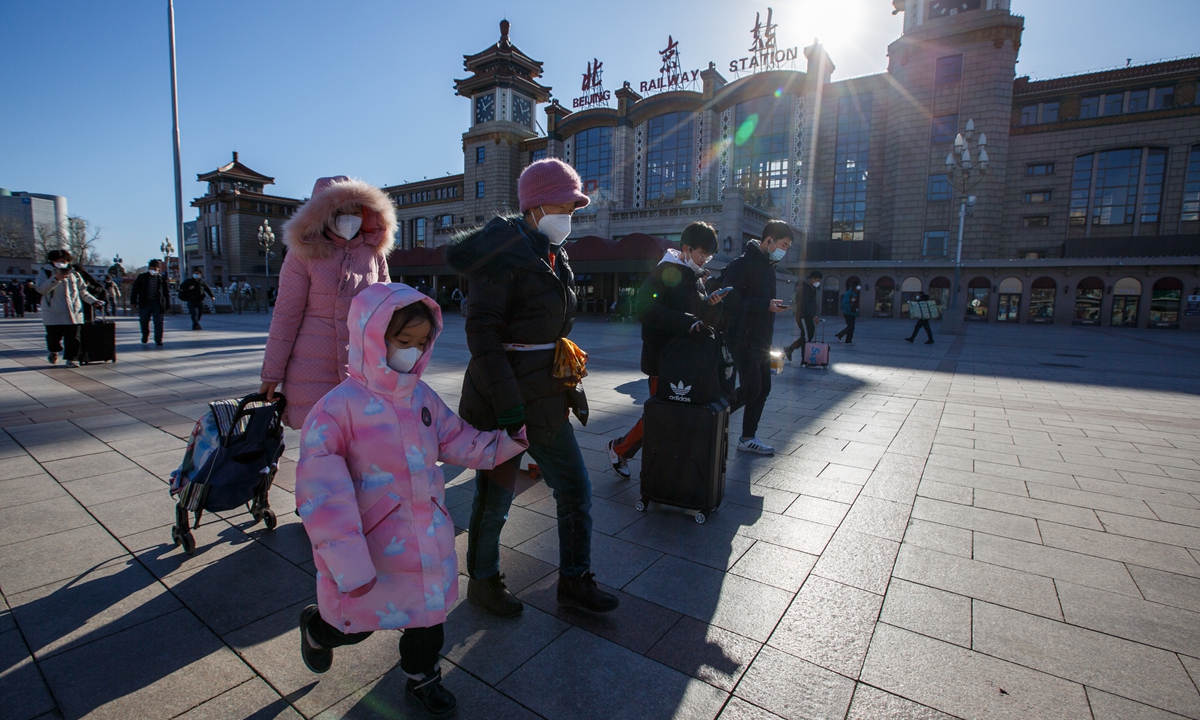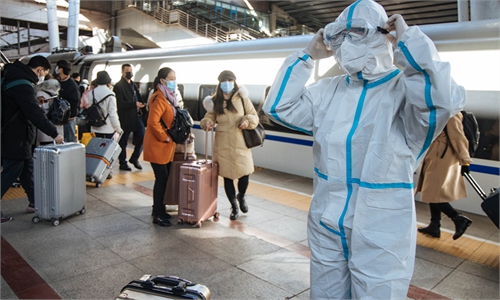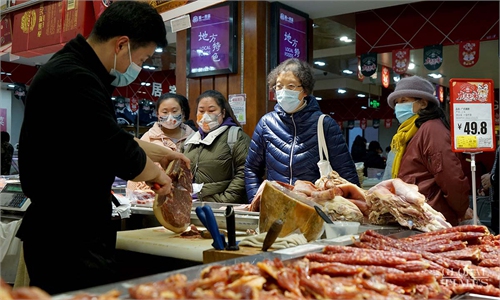Searches for train tickets during Spring Festival travel rush jump 220% as sale starts

Photo: IC
Train tickets for China's upcoming Spring Festival travel rush, which will run from January 7 to February 15, started sale on Saturday. Searches for train tickets for the first day of the travel rush soared 220 percent hours after their sales started, as people plan trips for family reunions and travels following the optimized anti-COVID-19 response measures, platform data showed.
Between 5 am and 9 am Saturday, searches for January 7 train tickets jumped 220 percent compared with the previous day, with tickets for some trains on popular travel routes such as from Beijing to Zhengzhou, capital of Central China's Henan Province and Beijing to Wuhan, capital of Central China's Hubei Province already sold out, according to data domestic online travel agency Qunar shared with the Global Times on Saturday.
Following official announcements on December 7 of further optimized anti-COVID-19 measures, localities across the country have gradually lifted travel restrictions, allowing many Chinese, especially migrant workers, to get back to reunite with their family members and consider inter-provincial travel.
Guo Lechun, deputy director of Qunar's big data research institute, said that the first peak for the Spring Festival travel rush would fall around January 15, when migrant workers begin trips back to their hometowns.
According to Qunar, there are about 13,000 bookings each day for train tickets during the Spring Festival travel rush on the platform since December 17, with top destinations including Chengdu, capital of Southwest China's Sichuan Province, Southwest China's Chongqing Municipality as well as Changsha, capital of Central China's Hunan Province - all areas known for large numbers of migrant workers.
China's railway authorities will step up efforts to coordinate COVID-19 prevention and control with transportation work to improve the quality of railway transportation during the travel rush, the China State Railway Group Co said in a statement on Friday.
The railway operator said it will arrange 6,077 sets of passenger trains on peak days before the Chinese Lunar New Year and 6,107 sets on peak days after the holidays, ensuring maximum passenger capacity will be 11 percent higher compared with the pre-epidemic Spring Festival travel rush in 2019.
According to data from another Chinese online travel agency Trip.com, inter-provincial travel grew 34 percent year-on-year during the upcoming New Year holidays, which runs from December 31 to January 2. It said inter-provincial group tours increased 46 percent year-on-year, and top tourist destinations include Shanghai, Beijing, Chengdu, and Sanya, South China's Hainan Province.
The tourism recovery in Hainan and Southwest China's Yunnan Province, which represent high-end travel destinations, is also picking up. Compared with the Mid-Autumn Festival holidays in September, inter-provincial travel bookings to Hainan during the New Year holidays skyrocketed 232 percent, and that to Yunnan rising by 20 percent, Trip.com said.
In addition, cross-border travel has also shown signs of a gradual recovery. As of Thursday, searches for air tickets for cross-border travel during the New Year holidays surged 133 percent compared with the same period last year, according to latest data from Trip.com. It said that air ticket bookings for travel to Macao Special Administrative Region increased 67 percent year-on-year and that to Hong Kong Special Administrative Region were up 50 percent. Other top travel cities include Melbourne, Australia, Singapore and Tokyo, Japan.
"The upcoming Spring Festival travel rush will be the first travel peak after the COVID-19. Although transport capacity and demand hasn't completely recovered, the growth of travel in some cities indicates that the tourism industry is poised for a strong recovery," Guo said, noting that the upcoming recovery will face no obstacles.


